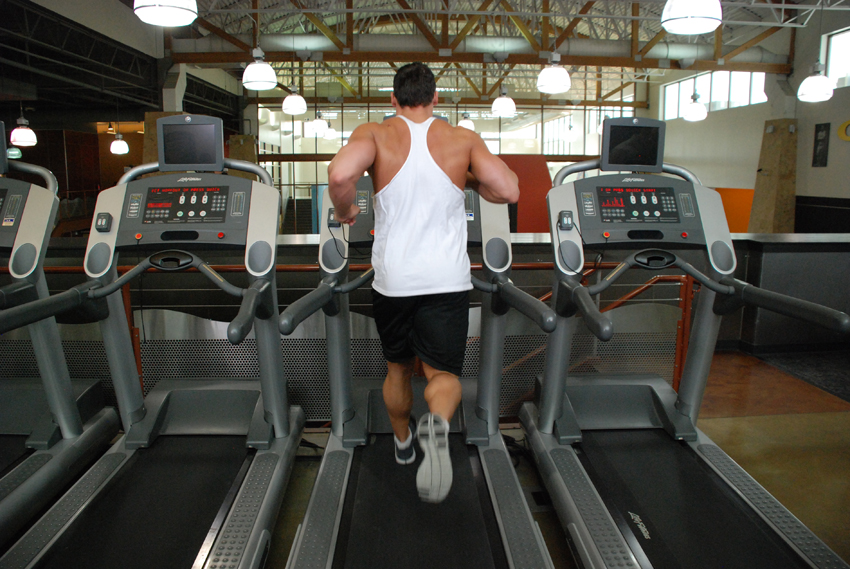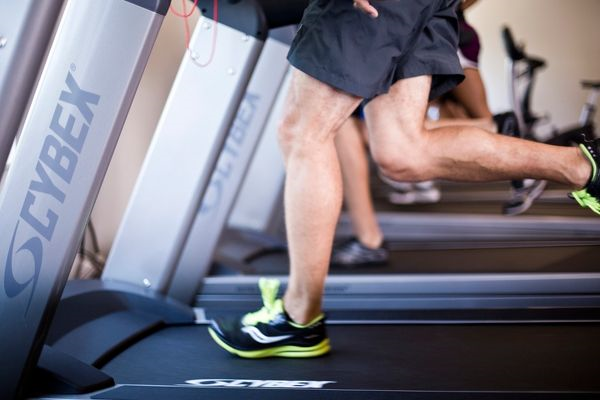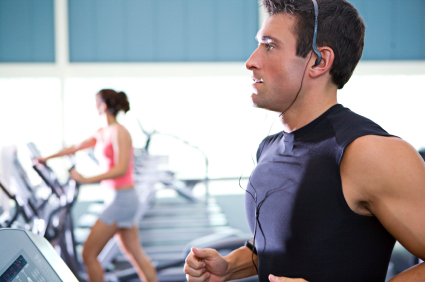 The treadmill can be an incredibly useful and effective tool in any workout. But it’s no surprise that there are many myths and misconceptions surrounding this piece of equipment.
The treadmill can be an incredibly useful and effective tool in any workout. But it’s no surprise that there are many myths and misconceptions surrounding this piece of equipment.
Here are a few of the most common:
- Calories burned is accurate: MYTH! Our bodies are very, very unique. It’s completely ridiculous to believe that by typing in your age and weight, a treadmill can accurately calculate your caloric burn. This is a gross oversimplification. Instead, use calories burned as a very general guide.
- You’ll run the same speed outside as on a treadmill: MYTH! Just because you can run a six minute mile on the treadmill doesn’t mean that you’ll be able to run one outside. The outside world is a very different beast with lots of added variables including weather, headwinds, uneven surfaces, hills, traffic and much more. Moreover, the spinning treadmill belt actually enables you to run a bit faster. This is especially important to consider if training for a 5k or competition race.
- You should always do cardio before strength training: MYTH! If your goal is cardiovascular endurance or weight loss, it may make sense to do cardio first - when you have a fresh set of legs. But if your goal is muscle size or strength, hit the weights first while your energy is still high. In actuality, the order of cardio versus strength training doesn’t make a huge difference; it’s more important to do what works for you.
- If someone is on the treadmill next to you, you’re not racing: MYTH! I’m only half joking with this one. Runners can be very competitive, and sometimes it’s nice to have an extra challenge.
- If you run at a 1% incline, it simulates outdoors running: MYTH! This is a very common tool and something that I’ve previously recommended. Because treadmill running is easier, adding an incline can help increase energy output and better simulate outdoors running. But the 1% incline is very general, and represents an over simplification. It’s only been found to accurate at running speeds of 7MPH or faster.
- Holding the treadmill handles while running is smart: MYTH, MYTH, MYTH! This myth needs to die today. Holding onto the treadmill handles is dangerous, especially at faster speeds. It also fundamentally changes the way your body moves and can make you less stable when walking or running without a treadmill. Moreover, holding onto a treadmill while moving at an incline actually negates the incline. All around, it’s a terrible idea.
- Sweating more will help you lose weight: MYTH! Well, it’s technically true that sweating results in weight loss - but the weight being lost is water, not fat. As soon as the body is re-hydrated, all that water weight comes back on. Nonetheless, you’ll see people running in sweatsuits to increase perspiration. It’s a silly idea that’s not backed by science.
Treadmills are a great tool. I use one almost every day and absolutely love it. But it’s important to separate fact from fiction and to have a safe, smart and effective workout.
P.S. If you’re looking to increase muscle definition, download Davey Wavey’s Bootcamp Workout and get started today with this exclusive workout series.















